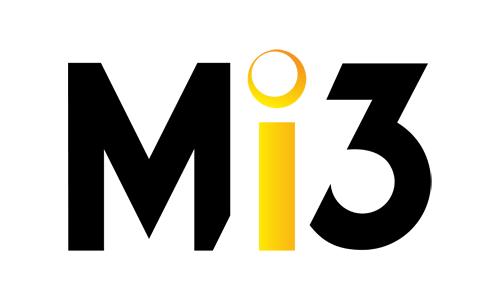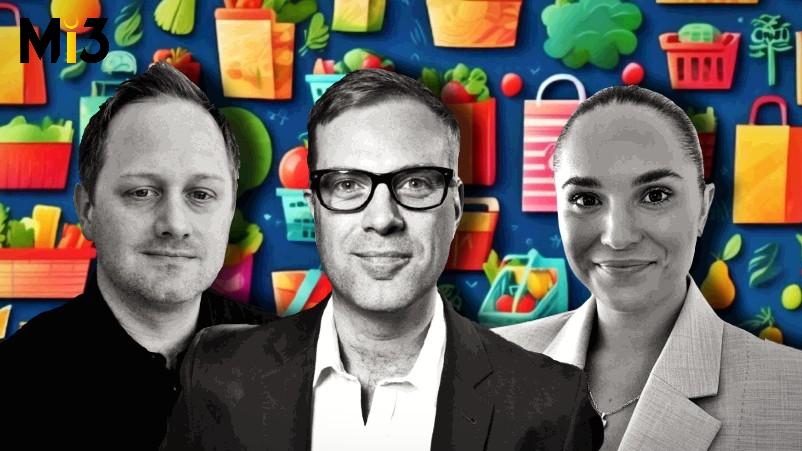Google paid $240 million over the odds to buy a rising star ad tech rival, before parking it, and then killing it off, the blockbuster ad antitrust case has heard.
Author: admin
The Iconic rolls out second phase of ‘Got You Looking’ campaign after 14% traffic uplift
Fashion and lifestyle ecommerce platform The Iconic has launched the second phase of its ‘Got You Looking’ masterbrand campaign, created in partnership with Dentsu Creative and Love Media.
GYG founder Steven Marks shares insights at Compadres Campfire series
The third event in the Compadres Campfire series, a platform for creative entrepreneurs, CEOs, and CMOs, has featured Steven Marks, Founder and Co-Chief Executive of Guzman y Gomez (GYG). The event was hosted by Compadres Founder, Clive Burcham, at the Association for Data-driven Marketing and Advertising (ADMA) offices.
GroupM appoints ex-Goodman Fielder marketer Leah Jackson as new group director of commerce strategy
Former Goodman Fielder marketing and media effectiveness leader, Leah Jackson, has switched client-side and is returning to her agency roots, becoming the new Group Director of Commerce Strategy at GroupM.
Brands built trillion dollar social media giants via ad spend, talk big purpose game, now some start to move on teen health crisis, age limits
Despite lofty purpose and customer-centricity talk, only one big brand, Hyundai, has put its heft behind Australia’s push to lift the age threshold for social media access to 16. But as the policy settings move from a cyber/tech issue to a public health crisis, the position brands need to take becomes more accute. Veteran social media marketer, Katie Palmer-Rose, has worked with the likes of L’Oreal, PepsiCo and Aldi and now runs influence agency Kindred. She thinks regulation is required for a legal age at 16 – and that brands will ultimately back it. For now they are “waiting to see where it lands”, but she reckons it’s time to prepare new teen approaches for “a digital world that doesn’t live in social media”. Rob Galluzzo, one of the architects of the 36 Months campaign urging government to protect younger teens from the health risks of social media, suggests more brands are about to walk the talk and sign-up. But the platforms, he claims, are pointblank refusing to engage – and telling staff not to talk.
Kincoppal girls’ only high school principal: ‘Social media the most damaging influence I’ve ever seen’, backs 16 age limit but ex-Facebook ANZ boss warns of fallout as brands stay silent
The proposed ban on social media for teens has polarised industry and academia with warnings aplenty it could backfire. Ex-Facebook ANZ MD Liam Walsh argues rather than a ban, dumbing down the algorithms, forcing algorithmic transparency through regulation or removing them altogether – could actually be the solution if fears of the effects of algorithmically-generated dopamine addiction and attention-hogging dark patterns on teenage mental health are the primary problem.”If we took that out, how many problems do we have with social?” he says. Walsh warns society has no structures in place to deal with fallout that could land in nine months’ time when the Albanese government proposes a new age limit on social media use. “If you take away kids’ whole network, how they commune with others, that’s kind of a big deal.” Walsh doubts teens will “suddenly start hanging out in the park and helping old ladies paint the fence.”Erica Thomas, Principal at private girls school Kincoppal in Sydney’s Rose Bay, agrees teenagers will “seek other things” to fill the void “and that is one concern” but warns there is no time to wait for a protracted legal battle with tech giants in attempts to curtail or open up the algorithms. She sees daily, first-hand, how badly action is required. Across a 30-year career in education, she says social media is “the most damaging influence I have ever seen”.Concentration levels are plummeting with teachers struggling to find a fix, girls are being conditioned to perfectionism from a young age, boys exposed to increasingly extreme violence, toxic influencers and highly sexualised images and bots of girls and young women – and in the last five years, “it’s got worse”.Brands have long championed ESG and purpose. But they’ve been strangely silent on the proposed ban. Katie Palmer-Rose, a social media marketer who has worked with the likes of L’Oreal, PepsiCo and Aldi and now runs influence agency Kindred, thinks many are waiting to see how it plays out. But she says they face a “moment in time where they tend to think very differently about how they show up in social media, how they build communities and connectedness in a digital world that doesn’t live in social media,”Production company Finch’s Rob Galluzzo and Greg Attwells fully expect legal challenges from tech platforms – who they claim have told staff to “stonewall” 36 Months, the campaign they founded with Nova’s Michael ‘Wippa’ Wipfli to push for a social media ban for under 16s. Dumbing down algorithms won’t cut it, says Attwells. Keeping regulation about health, not tech, and moving fast is key, they suggest – with more backer brands about to be announced. The next phase is designing the massive educational and societal infrastructure required to fill the looming gap.
Accenture Song’s global, APAC, ANZ design-product chiefs on transformation’s next wave, moving beyond experience ‘chicken nuggets’, undercooked personalisation
The digital transformation sprint left everybody with “bland” customer experiences, per Fjord founder turned Accenture Song’s global design and product chief Olof Schybergson. After the Covid hangover, he thinks the next wave is incoming, driven by ‘fluid experiences’ that cut through templated attempts at personalisation, where design leads technology, not vice versa, and creates new products, income streams and business models while delivering actual customer value. He reels off case studies for Fortune 500, beauty firm Shiseido and Saudi Arabia’s flagship airline as needle movers. Sydney-based APAC design and digital products boss Cristiano Dencker was shocked at the high penetration of recommendation engines in Australia when he landed last year. Problem is, he reckons, they are not being properly harnessed and personalisation as a differentiator “is BS” pushed by vendors and agencies. ANZ design lead, Fabio Buresti, thinks local airlines and streaming services are standout examples of ‘cut and paste’ homogeneity when it comes to UX and UI. But he says blue chips like NRMA, Qantas and Tourism Australia are busting to break the mould.
Honda Australia fined $18,780 for alleged breach of service and repair scheme
Honda Australia has been fined $18,780 for an alleged breach of the Motor Vehicle Service and Repair Information Sharing Scheme (MVIS scheme) information sharing requirements.
In retail media measurement, most brands still fall into the ROAS trap: IAB panel
Retail media may be the fast-rising star among advertising channels, but too many brands remain fixated on ROAS as the single metric. There are several reasons, starting with a tight economy, but a lack of technological sophistication is also a problem for many brands, according to panelists at an IAB event last week which included Roger Dunn, global head, retail media & performance media, Diageo, Hope Williams, head of ecommerce at Kinesso, and Andy Ford, head of data intelligence and measurement for Coles360.
Haylee Felton switches roadside assistance and insurance for education, becomes CMO of Uni of WA
RAC WA is on the hunt for a new GM of brand and marketing following the resignation of Haylee Felton after a three-and-a-half-year stint. The experienced marketing exec has accepted a position as CMO at University of Western Australia (UWA), effective from 7 October.









